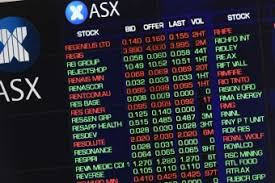Weekly market update - 29th of April 2019
Written and accurate as at: May 03, 2019 Current Stats & Facts

Australian equities continued to ride a wave of supportive macro sentiment over the last two weeks, gaining +2.2% (S&P/ASX 300 total return).
There is a sense that the liquidity tap has been opened a half-twist as subdued inflation – both in the US and Australia – is driving expected interest rates lower. In this vein, the domestic consumer price index (CPI) did not shift in Q1 2019, according to a report from the Australian Bureau of Statistics released last week. As a result, the consensus expectation for RBA rate cuts has been brought forward, with most now expecting a cut soon after next month’s federal election, followed by another at the end of the year.
This material shift in rate expectations fed through to bond yields, with 10 year government bonds now yielding 1.78% versus 1.88% two weeks ago. The AUD also weakened to US$0.70.
At the same time, fears around US economic growth continue to recede as a series of positive indicators culminated in a +3.2% annualised growth rate in Q1 GDP, well ahead of the +2.3% consensus.
The net effect of modest US growth, subdued inflation, a weaker currency and the expectation of rate cuts remains supportive for the domestic equity market and has helped drive the gains in recent weeks. The key risk – outside of a geopolitical curve-ball – is if we start to see signs of growth accelerating too much in the US. This could bring the possibility of another about-face by the Fed back in to play.
The only major clouds in the market hovered over commodities in the last fortnight, with the S&P/ASX Metals & Mining sector shedding -4.3%. Chinese officials have issued some cautionary signals on stimulus, perhaps in response to a surging domestic equity market, which has seen the iron ore price come off its recent highs. This weighed on BHP (BHP, - 5.0%), Rio Tinto (RIO, -2.9%) and Fortescue Metals (FMG, -10.9%); although the iron ore price has only softened from ~US$94 to ~US$92. The resource sector continues to drive the majority of the market’s earnings growth. The iron ore price remains well ahead of the street’s expectations and could fall a further US$10 and still leave the miners with earnings upgrades and hugely cash flow generative, especially with the AUD at US$0.70.
The reasonably large reaction from the miners could be driven by a desire among some investors to bank some profits from the miners and reduce shorts and underweights in the banks - which gained +5.6% in the last fortnight (S&P/ASX 300 Banks). The market has been heavily underweight in the banks, however rate cuts could ease funding pressures and bring some margin relief for the banks depending on the proportion that they pass through. This may have prompted some investors to reduce their negative bets on the sector.
Regional banks Bendigo & Adelaide Bank (BEN, +7.6%) and Bank of Queensland (BOQ, +7.5%) led the pack given they have larger leverage to falling rates than the Big Four. However the latter were also up between +4.0% (National Australia Bank (NAB)) and +7.0% (Westpac (WBC)). Both WBC and ANZ (ANZ, +5.3%) report this week, which will give an important touchpoint for the sector’s health. We remain cautious. While lower rates may ease some pressure, we still think the sector is likely to see earnings contract in coming halves given moribund credit growth and increased regulatory costs.
There were a few noteworthy points beyond this barbell between resources and banks. Lower bond yields both in Australia and the US have helped propel high growth consumer stocks such as A2 Milk (A2M, +10.8%), Treasury Wine Estates (TWE, +10.3%) and Cochlear (COH, +10.2%).
Meanwhile we also saw an FY19 profit downgrade at Flight Centre (FLT, -9.6%) on the back of disappointing trends in their Australian leisure travel division. Management has cited the combination of challenging trading conditions and the disruption of structural changes in the division as driving the 10-15% earnings downgrade. All whils the domestic leisure travel sector continues to grow.
FLT has consolidated several of its domestic leisure brands, upgraded systems, and closed some of its shopfronts as part of a programme to slash costs in the domestic business. While this makes sound strategic sense, it has led to a near-term upheaval and pressure on market share which was widely anticipated but seems to be worse than expected. The Australian leisure component only comprises ~15% of Group earnings – down from ~20% previously – and the other parts of FLT such as corporate travel continue to do well. Valuations may look compelling – however management now need to convince the market that they can return the domestic leisure business to stability before we are likely to see a re-rating.
On the positive side, Duluxgroup (DLX, +30.1%) was among the market’s best following a takeover bid from Nippon Paints. This serves as a reminder that, with the yield trade seemingly back on, there are global companies with very low cost of capital – particularly in Europe and Japan – which do step in selectively to our market. The track record for the acquirers has been mixed – the typical outcome has been a very full price and a disappointing return, as has been the case with Japan Post’s 2015 acquisition of Toll. Nevertheless, it can also help underpin local equity markets.










